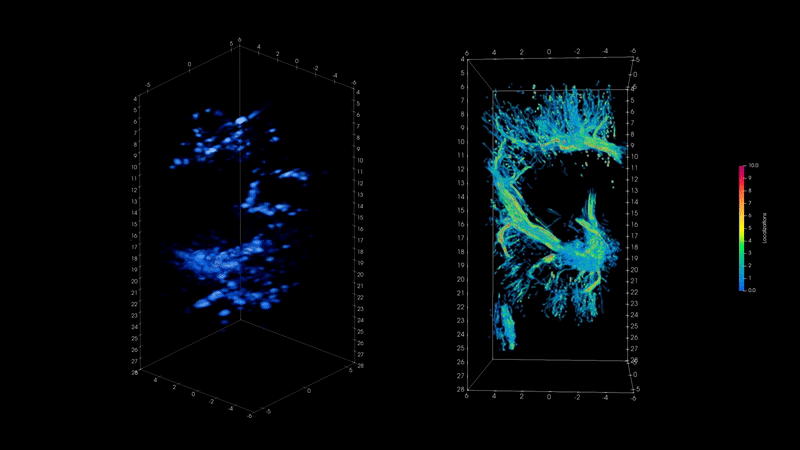Objective
The aim of this study is to demonstrate 3-dimensional (3D) acoustic wave sparsely activated localization microscopy (AWSALM) of microvascular flow in vivo using phase change contrast agents (PCCAs).
Materials and Methods
Three-dimensional AWSALM using acoustically activable PCCAs was evaluated on a crossed tube microflow phantom, the kidney of New Zealand White rabbits, and the brain of C57BL/6J mice through intact skull. A mixture of C3F8 and C4F10 low-boiling-point fluorocarbon gas was used to generate PCCAs with an appropriate activation pressure. A multiplexed 8-MHz matrix array connected to a 256-channel ultrasound research platform was used for transmitting activation and imaging ultrasound pulses and recording echoes. The in vitro and in vivo echo data were subsequently beamformed and processed using a set of customized algorithms for generating 3D super-resolution ultrasound images through localizing and tracking activated contrast agents.
Results
With 3D AWSALM, the acoustic activation of PCCAs can be controlled both spatially and temporally, enabling contrast on demand and capable of revealing 3D microvascular connectivity. The spatial resolution of the 3D AWSALM images measured using Fourier shell correlation is 64 μm, presenting a 9-time improvement compared with the point spread function and 1.5 times compared with half the wavelength. Compared with the microbubble-based approach, more signals were localized in the microvasculature at similar concentrations while retaining sparsity and longer tracks in larger vessels. Transcranial imaging was demonstrated as a proof of principle of PCCA activation in the mouse brain with 3D AWSALM.
Conclusions
Three-dimensional AWSALM generates volumetric ultrasound super-resolution microvascular images in vivo with spatiotemporal selectivity and enhanced microvascular penetration.
DOI: 10.1097/RLI.0000000000001033
